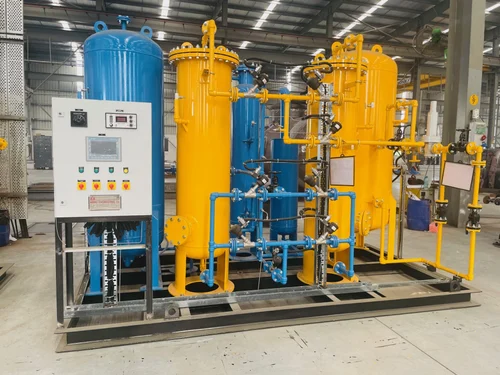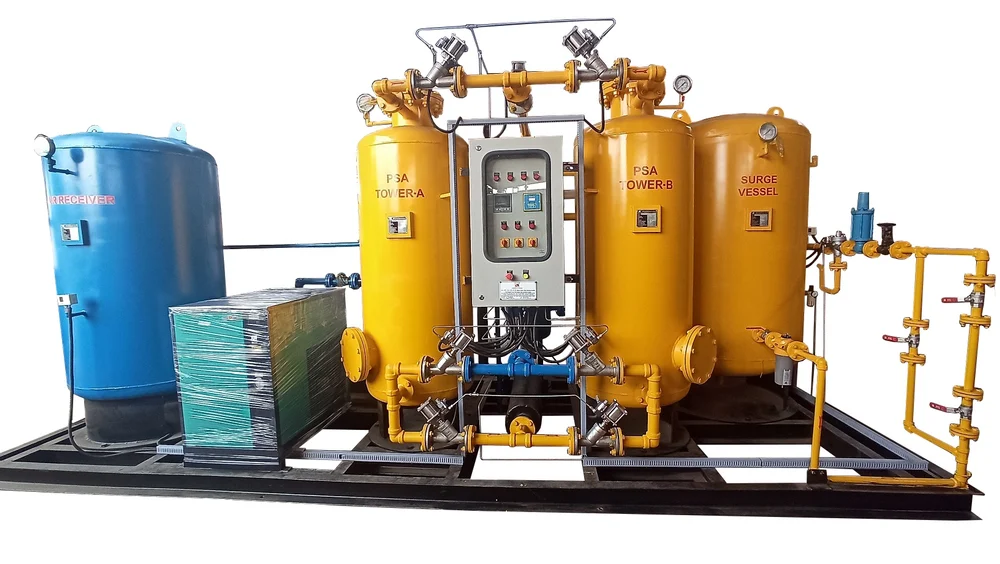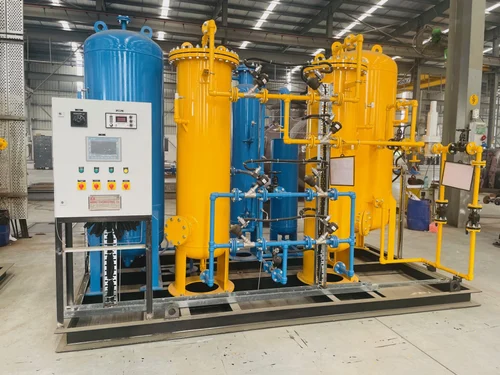Leading the Way as Oxygen and Nitrogen Gas Generator Manufacturers

In this blog i will provide you Top class Nitrogen and Oxygen manufacturers in India. PSG Engineering Company, a leading Oxygen Gas Generator Manufacturer and Nitrogen Gas Generator Manufacturer,
What Is Nitrogen Gas Plant, And How Does It Work?

What Is Nitrogen Gas Plant, And How Does It Work? What Is a Nitrogen Gas Plant? A Nitrogen Gas Plant is a facility designed to produce nitrogen gas (N₂) on a large scale. Nitrogen, which makes up about 78% of Earth’s atmosphere, is a colorless, odorless, and inert gas at room temperature. Its inert nature makes it invaluable in various applications where it is used to create an inert atmosphere to prevent unwanted chemical reactions. Nitrogen gas plants are critical in industries such as: How Does a Nitrogen Gas Plant Work? 1. Air Separation: The Heart of the Process At its core, a nitrogen gas plant operates by separating nitrogen from other components of the air. The primary method for this separation is known as the Air Separation Process, which can be accomplished through various techniques: a. Cryogenic Distillation: This is the most common method for large-scale nitrogen production. In this process: b. Pressure Swing Adsorption (PSA): This method is used for medium-scale applications. It involves: c. Membrane Separation: This technique uses selective permeable membranes to separate nitrogen from the air. The membranes allow nitrogen to pass through while retaining oxygen and other gases. 2. Purification and Compression Once separated, the nitrogen needs to be purified to remove any remaining traces of other gases. This is achieved through additional filtration and purification systems. The purified nitrogen is then compressed to the desired pressure, making it suitable for storage and transport. 3. Storage and Distribution The final step in the nitrogen production process is storage and distribution. Nitrogen gas is typically stored in high-pressure cylinders or tanks. In industrial settings, it can also be supplied as a cryogenic liquid, which is easier to transport and handle in bulk. Applications of Nitrogen Gas Plant The versatility of nitrogen makes it an essential component in various applications: Why Is Nitrogen Important? Nitrogen’s importance cannot be overstated. Its inert properties prevent unwanted chemical reactions, making it a valuable asset in many industries. From preserving your favorite snacks to ensuring the quality of electronic devices, nitrogen gas plays a behind-the-scenes role in modern life. Conclusion A nitrogen gas plant is a marvel of industrial engineering, designed to harness and purify one of the most abundant elements in our atmosphere. By using advanced separation techniques, these plants provide a critical resource for a wide range of applications. Understanding how they work helps us appreciate the intricate processes that support various aspects of our daily lives and the industries that drive our economy. So next time you enjoy a fresh bag of chips or benefit from a high-tech gadget, remember that a nitrogen gas plant played a part in making it possible.
Exploring Nitrogen Gas Plants: What You Need to Know

A nitrogen gas plant is a facility designed to produce nitrogen gas (N₂) from the air we breathe, which is composed of approximately 78% nitrogen, 21% oxygen, and small amounts of other gases. The primary method used in nitrogen gas plants is through a process called cryogenic distillation.
What are the Application of PSA Nitrogen Gas Plant?

A PSA (Pressure Swing Adsorption) nitrogen gas plant is a technology used to generate nitrogen gas from atmospheric air through a process of adsorption and desorption. This technology is based on the principle that certain adsorbent materials, such as carbon molecular sieves or zeolites, can selectively adsorb oxygen and other trace gases from air under pressure.
